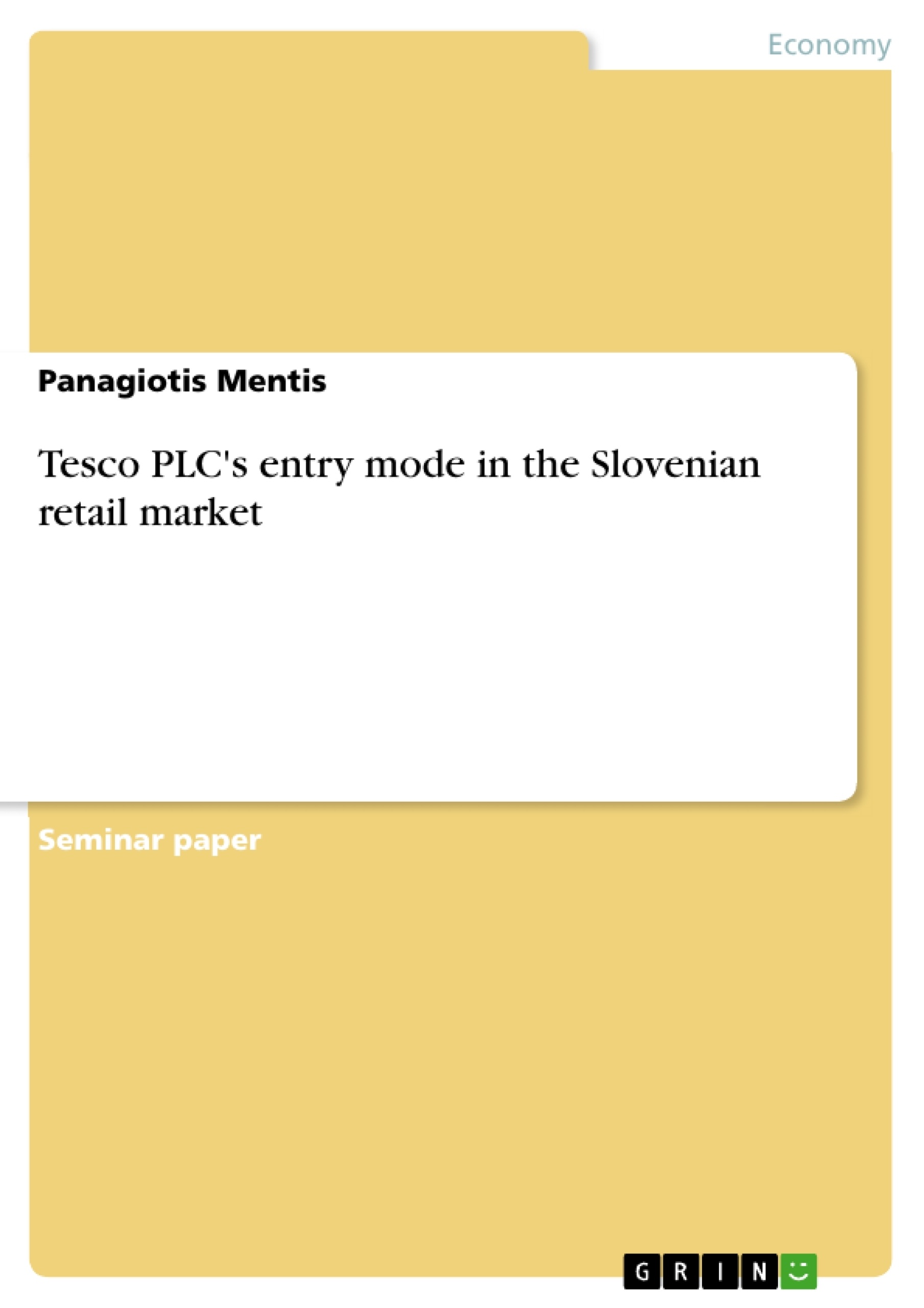This paper examines Tesco PLC’s entry in the Slovenian retail market.
When evaluating the positives and negatives, the greenfield strategy is seemingly more risky due to cost and time constraints compared to acquisition. The most suitable strategy for a large company to enter Slovenia’s trade would be to usurp a current retailer, due to it being a relatively small country. Using acquired knowledge of customer and consumer habits in foreign countries facilitates entering Slovenian retail. Moreover, Tesco PLC has the required assets for expanding and continuing Tesco’s multinational strategy.
Slovenia is an attractive opportunity for foreign companies to put investment into, as the risk factor is low because of steady governmental regulations and stability within the economy. The country owns a fast growing IT sector which is an advantage and opportunity for Tesco PLC regarding its e-commerce, in addition to the sporadic increase of internet users. Slovenia has had constant GDP growth rates of 3.5 %, which indicates stability in economic growth.
Inhaltsverzeichnis (Table of Contents)
- Plagiarism Declaration
- Table of Contents
- Table of Figures
- List of Abbreviations
- 1. Executive Summary
- 2. Introduction
- 3. MNE Analysis
- 4. Industry Analysis
- 5. Country analysis
- 6. Regional Organization
- 7. Mode of Entry analysis and recommendation
- Bibliography
Zielsetzung und Themenschwerpunkte (Objectives and Key Themes)
This report analyzes Tesco PLC's potential entry into the Slovenian retail market. It evaluates the advantages and disadvantages of various entry strategies, considering the company's resources, the Slovenian market environment, and the competitive landscape.
- Evaluation of different entry modes for Tesco PLC into the Slovenian market.
- Analysis of the Slovenian retail market landscape and its attractiveness for foreign investment.
- Assessment of the economic and political stability of Slovenia and its implications for Tesco PLC's entry strategy.
- Exploration of the role of the European Union in facilitating international trade and investment in Slovenia.
- Analysis of the competitive landscape within the Slovenian retail industry.
Zusammenfassung der Kapitel (Chapter Summaries)
- Executive Summary: Provides a concise overview of the report, highlighting the main findings and recommendations regarding Tesco PLC's entry into the Slovenian retail market.
- Introduction: Establishes the context of the report by introducing Tesco PLC and its multinational strategy, outlining the objectives and scope of the analysis.
- MNE Analysis: Examines the strengths, weaknesses, opportunities, and threats of Tesco PLC as a multinational enterprise, considering its existing resources and capabilities.
- Industry Analysis: Provides an in-depth analysis of the Slovenian retail industry, considering its structure, competitive dynamics, and key trends.
- Country Analysis: Explores the economic, political, and social environment of Slovenia, assessing its potential for foreign investment and its attractiveness to Tesco PLC.
- Regional Organization: Analyzes the role of the European Union as a regional organization in facilitating international trade and investment in Slovenia.
- Mode of Entry Analysis and Recommendation: Evaluates different entry modes for Tesco PLC, such as greenfield investment and acquisition, and presents the most suitable option based on the analysis.
Schlüsselwörter (Keywords)
This paper explores the themes of foreign direct investment, multinational enterprise strategy, retail market analysis, entry mode selection, greenfield investment, acquisition, economic stability, European Union, competitive landscape, and Slovenia.
- Quote paper
- Panagiotis Mentis (Author), 2012, Tesco PLC's entry mode in the Slovenian retail market, Munich, GRIN Verlag, https://www.grin.com/document/213601




